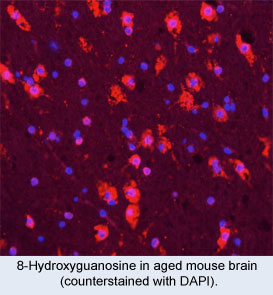Baur Lab Research
Overview
Aging is a critical risk factor for the major causes of morbidity and mortality in the western world, including cardiovascular disease, diabetes, cancer, and neurodegenerative disorders. Although the causes of aging are not known, it can be delayed experimentally in rodents by decreasing energy intake in the absence of malnutrition (caloric restriction, CR) and by a growing list of genetic and small molecule interventions. Our work is centered on elucidating the molecular mechanism(s) that mediate these improvements in health and delays in multiple age-related diseases, with a particular focus on nicotinamide adenine dinucleotide (NAD) metabolism and mTOR signaling.
Current Research Projects
Functional Consequences of Changes in NAD Metabolism
Nicotinamide adenine dinucleotide (NAD) is a critical redox cofactor for hundreds of enzymes and also serves as a cosubstrate for signaling enzymes including sirtuins, poly ADP-ribose polymerases (PARPs), and NADases such as CD38. NAD concentrations fall in certain disease processes and over the course of natural aging, which has prompted intense interest in the potential benefits of supplementation. In rodents, supplementation with the precursors nicotinamide riboside (NR) and nicotinamide mononucleotide (NMN) confers beneficial effects on health and longevity. However, the molecular mechanisms involved and the relevance of these observations to humans remain subjects of debate. We are applying a combination of genetic models and tracer studies to elucidate the pathways by which NAD precursors are metabolized as well as the downstream consequences that mediate their functional effects.
To this end, we have generated mouse models with overexpression or knockout of nicotinamide phosphoribosyltransferase (Nampt), the rate-limiting enzyme in the generation of NAD from nicotinamide (Figure 1), in multiple tissues and cell types. We have also made extensive use of the regenerating liver as a system in which NAD metabolism is naturally stressed and the ability to synthesize new NAD limits the production of hepatocytes. Together with the laboratories of Marie Migaud (University of South Alabama) and Josh Rabinowitz (Princeton University), we are employing novel tracers with heavy isotopes in multiple positions to allow us to infer the metabolic routes that lead to NAD synthesis in different compartments. Finally, we are using tracer infusion to measure changes in the steady state rates of NAD synthesis and breakdown - this strategy will allow us to understand why NAD concentrations fall with age or disease in different tissues, and eventually to determine which enzymes are the major consumers.
Source(s) of Mitochondrial NAD
Mitochondria have an absolute requirement for NAD in order to carry out many of their functions, including the oxidation of fuels to produce ATP for the cell, yet the mechanism by which mammalian mitochondria obtain NAD has remained unknown. Yeast and plant mitochondria have dedicated NAD transporters, but no obvious homologs are present in mammalian genomes. Due to the presence of NAD biosynthetic enzymes within mammalian mitochondria, it has been suggested that the organelles might take up precursors and generate their own NAD. However, we recently presented evidence from tracer studies indicating that mammalian mitochondria can take up cytosolic NAD, pointing to the existence of an unknown transporter. Whether synthesis from precursors also occurs is an active area of investigation. The lab is currently working to understand the functional consequences of altered mitochondrial NAD levels and to characterize the transport of NAD and related molecules into mitochondria, including identification of the transporters involved.
Understanding How Rapamycin and mTOR Signaling Influence Health and Longevity
Rapamycin, an inhibitor of mTORC1 and mTORC2, has been shown to robustly and reproducibly extend the lifespans of multiple species, including mice. However, the underlying mechanisms remain unknown, and side effects including immunosuppression, increased risk of new-onset diabetes, and hyperlipidemia are likely to limit the utility of the drug in humans. Together with Dudley Lamming (University of Wisconsin-Madison), we showed that genetic inhibition of mTORC1 can confer lifespan extension while avoiding the insulin resistance that is seen with rapamycin. Current projects in the lab are focused on understanding the downstream targets of mTORC1 that contribute to longevity, determining the metabolic consequences of mTORC2 inhibition, and determining the tissues and molecular mechanisms that contribute to rapamycin-induced hyperlipidemia, one of the most penetrant side effects both in rodents and humans. Understanding and avoiding hyperlipidemia is a critical step in the development of therapies to delay aging and age-related disease by targeting the mTOR pathways.
The Effects of Sleep Disruption on Endocrine Function and Alzheimer’ Disease Progression
In a collaborative project between the Baur and Naidoo labs, we have shown that sleep disruption unexpectedly triggers the unfolded protein response (UPR) in the pancreas. In older animals, where the pancreas is already under protein folding stress, chronic sleep loss can push the UPR into a maladaptive phase that promotes apoptosis and impairs insulin production, leading to glucose intolerance. We are investigating whether these mechanisms might contribute to the strong epidemiological associations between sleep loss, diabetes, and Alzheimer’s disease. Consistently, sleep disruption accelerates the cognitive decline in mouse models of Alzheimer’s disease. Our current focus is on testing whether this paradigm disrupts glucose homeostasis and whether chemical chaperones, such as 4-phenylbutyric acid (PBA) can alleviate protein folding stress and restore both glucose homeostasis and cognition.


